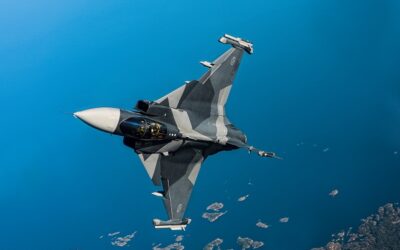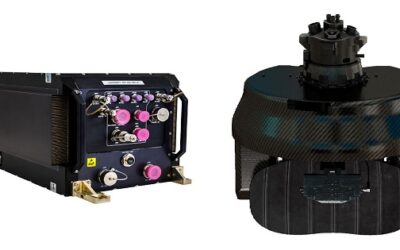2018 AUSA Global Force Symposium & Exposition Mid-Day Report (Day 3 28 March)
The Bell-led V-280 VALOR team is fielding a cutting-edge tiltrotor aircraft to meet the needs of the US Army’s Joint Multi-Role Demonstrator and inform the Pentagon of the requirements for the Future Vertical Lift (FVL) Program. Carl Coffman, Bell’s Director for Global Business Development for Advanced Tiltrotor Systems, recalled that after two years of assembly, the first V-280 flight was last 18 December at the corporate facility in Amarillo, Texas (US). “We’ve been expanding the envelope ever since. Today we have about 70 hours of run time and that is total run time – on the ground, restrained ground run, unrestrained ground run, including slightly more than 15 hours flight time – on the aircraft,” the retired US Army aviator said.
The V-280 is relying on Bell’s legacy with the V-22 and earlier tilt rotor aircraft, with Mr. Coffman noting: “We are probably the world’s expert on tiltrotor aircraft.”
The Bell competitive design has been a “clean sheet design,” designed in a 3-D CAD environment, which has been very beneficial in Team VALOR’s plans to build, actually build, and now fly, and otherwise operate and maintain the aircraft. “The 3-D digital environment has afforded us a lot – reducing the cost of manufacturing the build of the aircraft, and the complexity of the aircraft,” the sector expert said and added, “The aircraft was built using Microsoft Surface Pro and this 3-D CAD data.”
Compared to an era of “bending metal” and similar activities to primarily move an aircraft design to flight certification, Mr. Coffman pointed out one return on investment of moving into the virtual design realm: “In one situation we tried to figure out a path to run hydraulic lines. Traditionally, going back and drawing those, and editing them would take 800 hours. You can do it in the 3-D virtual environment in 80 hours – there’s a huge difference in your ability to adjust.”
Further, the 3-D digital environment has permitted the 11 Bell V-280 industry partners and its US government team mate to quickly and efficiently trade information to complete quality control, respond to questions and perform other activities.
Looking onto the V-280’s near-term programme horizon, Mr. Coffman said his team will, “continue to expand the flight envelope and try to hit a whole list of key performance parameters (KPPs).” Several of the prioritised, initial KPPs include “high hot hover” and moving in the airplane mode at 280-300 kts. “We’re carving a very defined path through the flight test envelope, and then we’ll back up and expand that, on what is a very defined line. We think by the end of this May we’ll be in the full conversion (airplane) mode. And we should be achieving those higher – 280-plus kt. – airspeeds.”
The corporate executive further emphasized the US government customer for the FVL Program is, “very interested in optionally manned capabilities – they want the aircraft to be optionally manned as well as manned.” To that end, the Bell-led team, “will also focus on and prove out through this December, that we can fly this aircraft unmanned as well,” Mr. Coffman concluded.
Marty Kauchak

























